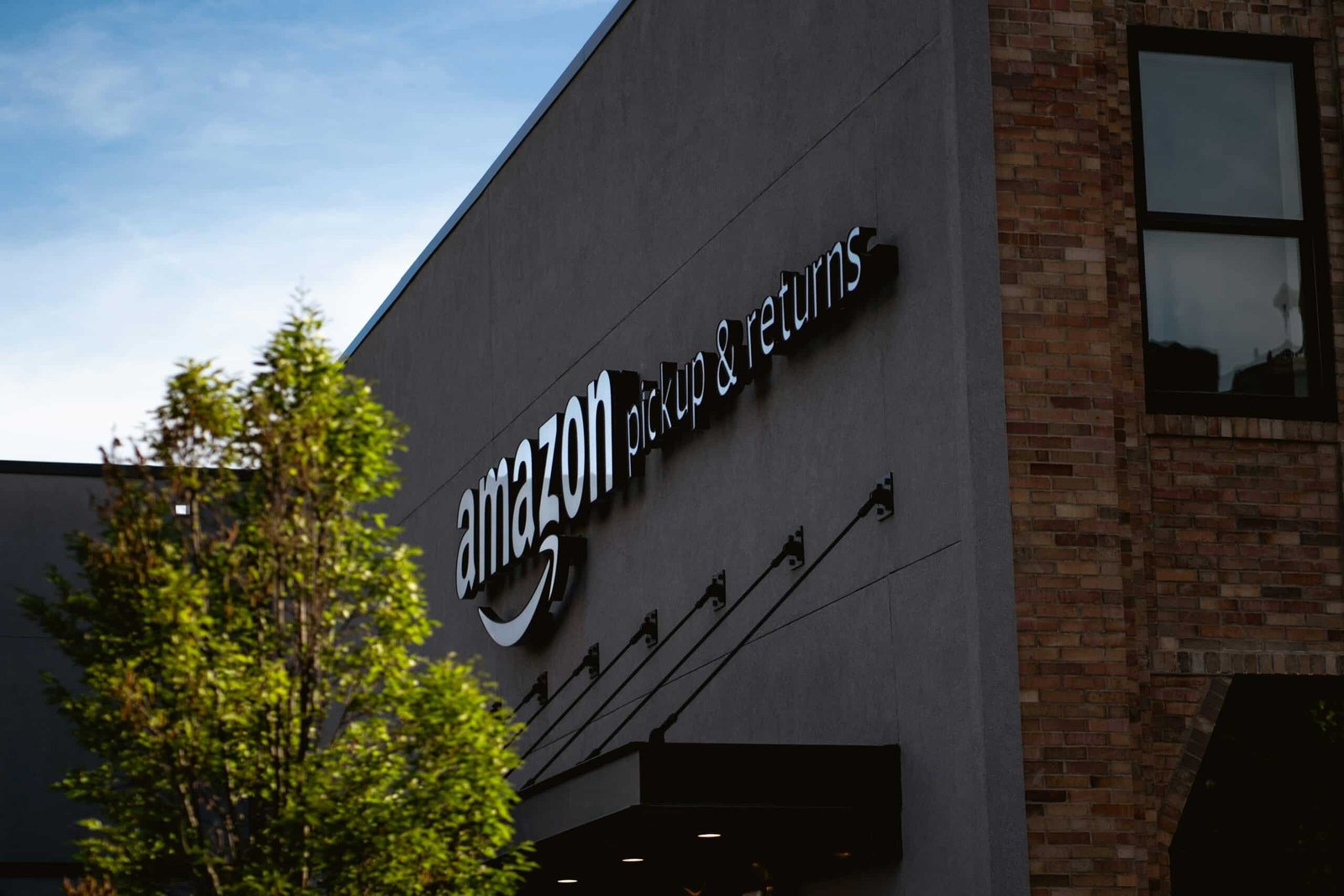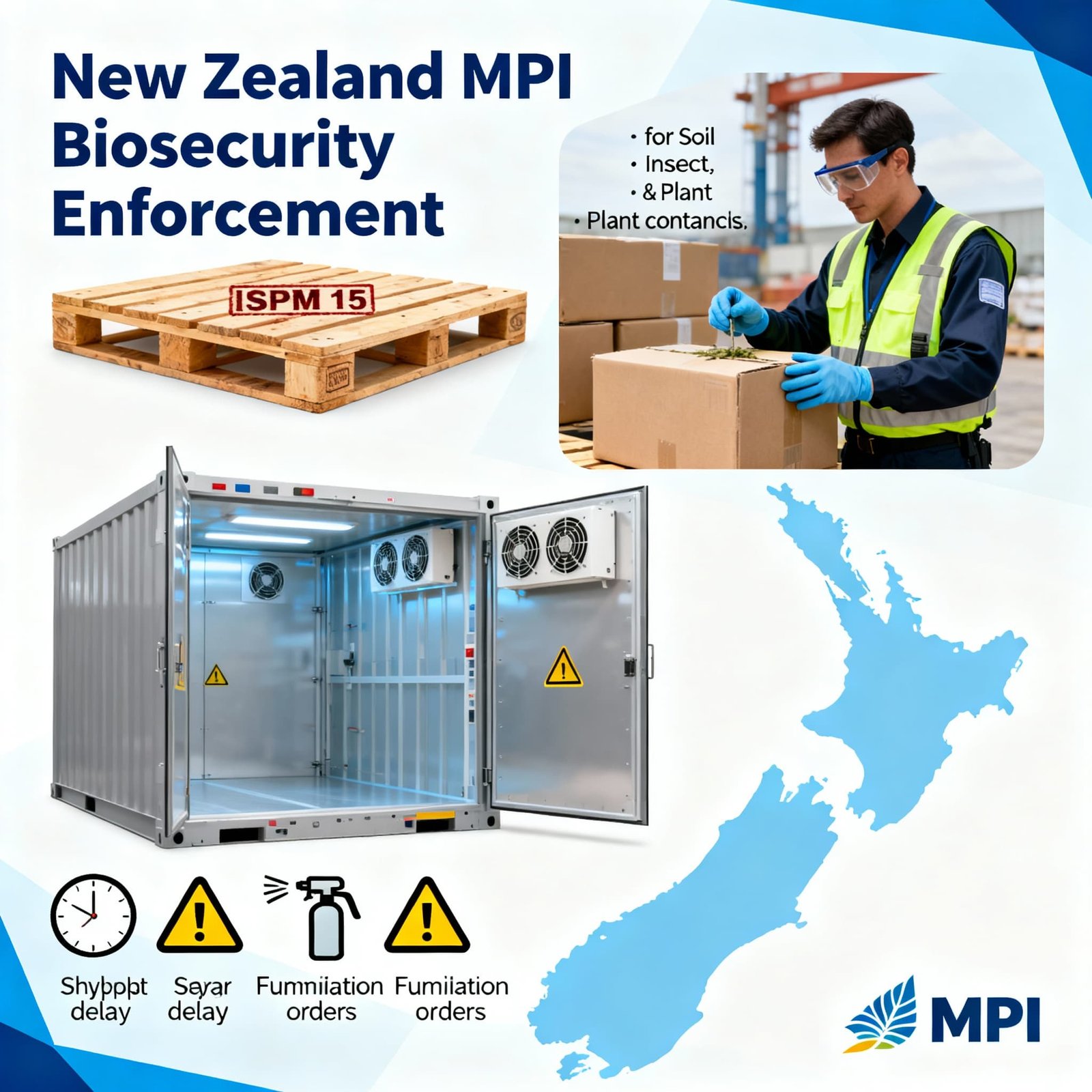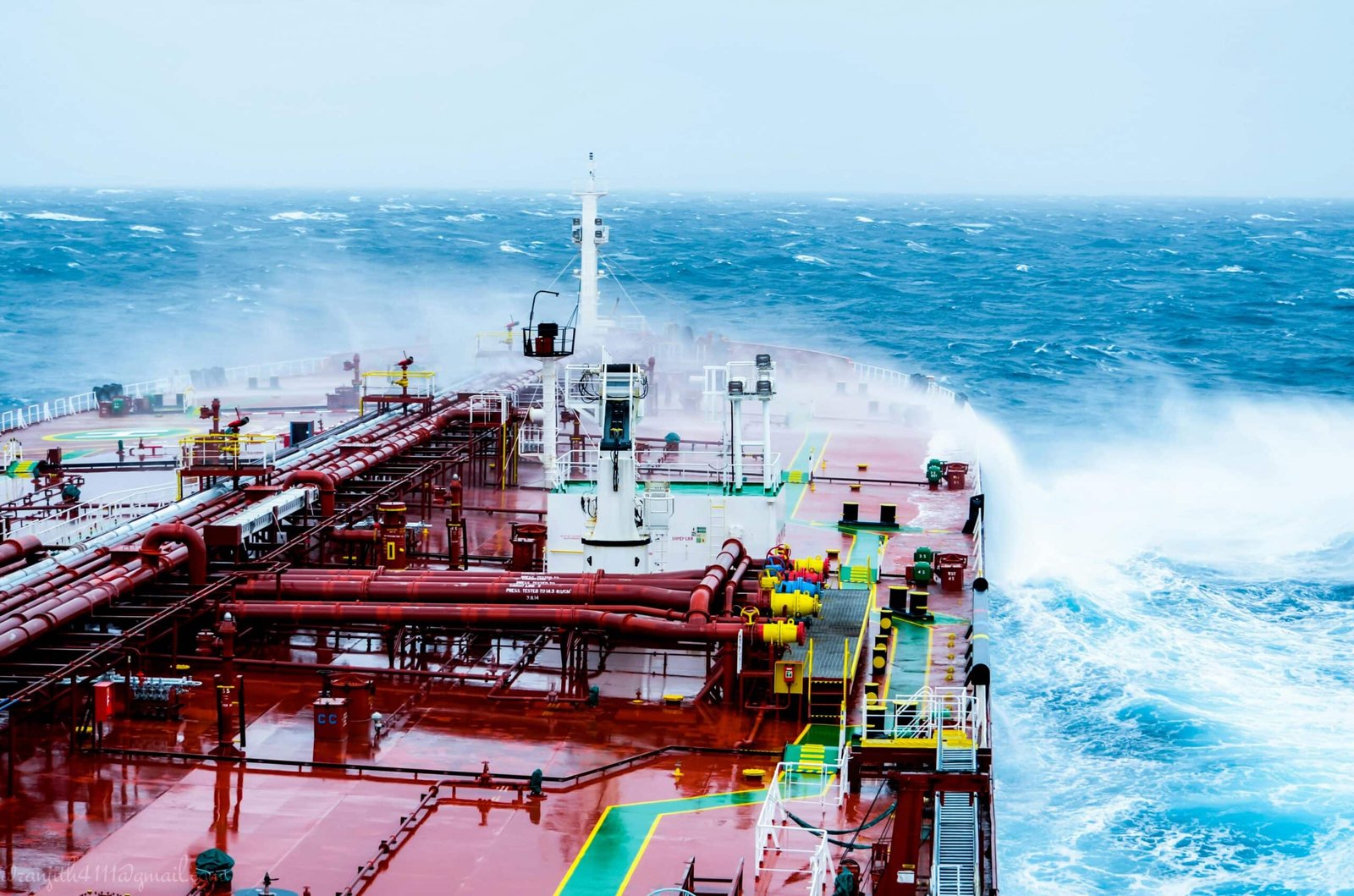How to Ship from China to NZ FBA Without Delays
By Guanwutong / October 20, 2025
For Chinese sellers and international distributors aiming to sell on Amazon in the New Zealand market, efficiency, compliance, and predictability in logistics are non-negotiable. The comprehensive supply chain journey starts at a factory gate in China and ends at an Amazon Fulfillment Centre (FC) in New Zealand (or its designated receiving point).
This intricate process involves multiple stages: international transport, customs clearance, domestic distribution, and the unique geographical challenge of the Cook Strait crossing between the North and South Islands.
Even after goods successfully clear Customs at major ports like Auckland or Wellington, delays in domestic logistics—particularly the volatile Cook Strait ferry—can critically disrupt the supply chain, causing costly stockouts and accruing unforeseen expenses.
This guide provides a step-by-step strategy for international sellers to ship to New Zealand FBA warehouses efficiently, focusing on rigorous export preparation, essential DDP clearance, proactive risk management, and strict FBA compliance to ensure smooth, predictable inventory flow.

1. China Export & FBA Preparation: The First Step in Shipping from China to NZ FBA
A successful FBA shipment to New Zealand starts with meticulous preparation at the supplier level in China and selecting the optimal transport mode that aligns with inventory needs and budget.
Choosing the Right Freight Mode for China–NZ FBA Shipments
The choice of transport mode is crucial for managing the long lead time from Asia and optimizing your Inventory Sales Ratio (ISR).
| Phương thức vận chuyển | Suitability | Total Door-to-Door Lead Time (DDP) | Cost Efficiency |
|---|---|---|---|
| Ocean Freight (FCL) | High volume, long-term stability stock. | 40 – 55 Days | Lowest |
| Ocean Freight (LCL) | Medium volume, regular replenishment (most common FBA). | 45 – 60 Days | Medium |
| Air Freight / Express | Urgent restock, high-value, new product launches, or seasonal promotions. | 7 – 15 Days | Highest |
Logistics Expert Tip: Implement a tiered strategy: use LCL Sea Freight for routine bulk stock and leverage Air Freight for safety stock or urgent restock needs.
Sellers should aim for inventory coverage of 60-90 days in transit and at the FC to mitigate delays caused by the Cook Strait.
Strict FBA Packaging and Labeling Compliance for NZ Shipments
Compliance originating at the factory in China is the key defense against potential Amazon fines, which can include Unplanned Service Fees (up to $500 NZD per incident) or outright rejections.
- FNSKU Labeling: Every sellable unit must have the unique FNSKU label clearly affixed, completely covering any existing UPC/EAN or other barcodes. Poor quality or smudged labels are a primary cause of check-in errors.
- Carton Labeling: The Amazon Shipping Labels (identifying FBA shipment details) on the outer cartons must perfectly match the shipping plan generated in Seller Central. Any discrepancy in box count or labels results in immediate processing halts.
- Packaging Durability: Given the long transit, multiple container load/unload cycles, and the potentially rough Ro-Ro crossing, cartons must be highly durable, ideally using five- or seven-layer corrugated cardboard to withstand compression.
- Weight and Dimension Limits: Strictly adhere to Amazon’s maximum carton weight (typically under 23 kg for manual handling). Overweight boxes must be labelled “Team Lift” clearly and prominently.
For any questions, feel free to contact GWT Shipping. Our team will provide professional, standards-compliant advice tailored to your specific needs.
2. International Logistics & NZ Border Clearance for China–NZ FBA Shipping
Once the shipment leaves China, managing the complex New Zealand customs and quarantine requirements becomes the focus.
The Essential DDP (Delivered Duty Paid) Mandate in FBA Freight
For FBA shipments to New Zealand, using the DDP Incoterm is necessary to ensure smooth entry.
Amazon’s IOR Prohibition
Amazon strictly prohibits serving as the Importer of Record (IOR). The DDP service provider must legally assume this role to ensure compliance with local import laws.
Tax Pre-Payment
DDP guarantees that the freight forwarder handles the payment of all New Zealand Import Duties and the 15% Goods and Services Tax (GST) upfront. This financial clarity allows the cargo to be released immediately upon arrival.
Tariff Concessions (FTA)
While the New Zealand-China Free Trade Agreement (FTA) makes the majority of Chinese goods duty-free (0% tariff), certain categories (like some textiles, clothing, and footwear) may still incur a duty of 5% to 10%. A professional DDP provider assists in preparing Certificates of Origin to leverage any applicable FTA benefits, minimizing the Total Landed Cost (TLC).
Tài liệu
Required documents include the Commercial Invoice, Packing List, Bill of Lading (B/L) or Air Waybill (AWB), and the mandatory IOR details provided by the forwarder.
Biosecurity Compliance: Meeting MPI Rules for FBA Shipments
New Zealand’s Biosecurity laws, enforced by the Ministry for Primary Industries (MPI), are internationally renowned for their strictness. Non-compliance is the fastest route to major delays and charges.
- ISPM 15 Standard: All wood packaging materials (pallets, crates, bracing wood) used for international shipping must be heat-treated or fumigated and display the indelible ISPM 15 stamp. Missing or obscured stamps can hold up an entire container.
- Absolute Cleanliness Protocol: Goods and all packaging must be completely free of contaminants, including soil, insects, seeds, or any plant matter. Expert forwarders often offer a final cleanliness inspection or certified fumigation service at the origin or destination port to mitigate risk.
- Consequences of Non-Compliance: If a Biosecurity risk is identified, the MPI has the authority to issue an expensive mandatory fumigation order (costly and delaying the shipment by 3-7 days) or even mandate the re-export of the entire consignment, a catastrophic failure for an FBA seller.

3. Cook Strait Freight: Managing Inter-Island Transport for FBA Shipments
After clearing Customs, the shipment begins its final domestic leg. If the FBA warehouse is on the opposite island, the Cook Strait crossing becomes the single most critical and unpredictable variable.
Understanding the Cook Strait Logistics Bottleneck
The 22-kilometre stretch of water connects the North Island (Wellington) and the South Island (Picton) using large Ro-Ro ferries for all commercial road freight.
- The Volatility Risk: The Cook Strait is notoriously rough. Severe weather (high winds, large swells) is the primary cause of frequent ferry cancellations and significant delays, often cascading into multi-day backlogs.
- Capacity Competition: During peak seasons (especially late Q4), demand for Ro-Ro deck space far outstrips supply. Freight booked on standard terms can be “rolled” (bumped) to a later sailing, leading to unforeseen delays.
- The FBA Appointment Domino Effect: A ferry delay directly causes the truck to miss its scheduled Amazon Delivery Slot (Booking). Amazon then automatically cancels the booking, requiring a new appointment to be made—a process that can add another 3-5 days of waiting time, severely impacting inventory flow.

Advanced Mitigation Strategies to Avoid FBA Delays
Dual-Carrier Capacity Contracts
Specialized logistics partners secure guaranteed capacity or preferential booking terms with both major ferry operators (StraitNZ Bluebridge and Interislander). This allows for immediate diversion to the next available slot on the alternative carrier following a cancellation.
Integrated Planning & Weather Buffer
International sellers must build a non-negotiable 3-5 day “Weather and Congestion Buffer” into their total Chinese lead time calculation to absorb domestic unpredictability.
Real-Time Appointment Management
The DDP provider’s operations team must maintain 24/7 visibility over the domestic movement. If a Strait delay is confirmed, they must instantly communicate with Amazon via Carrier Central to secure a revised delivery slot, minimizing truck detention time upon arrival at the FC.
4. FBA Final Mile Delivery and Cost Analysis for China–NZ Freight
Success is measured not just by arrival in New Zealand, but by prompt, penalty-free check-in at the Amazon dock.
FBA Pallet Specifications and Delivery Protocols
Amazon’s final-mile rules are strict, designed for high-speed automated processing:
- Pallet Type and Dimensions: Pallets must be four-way entry, typically adhering to a stable footprint near the 1200mm x 1000mm standard (though some flexibility exists for the Australian/NZ standard of 1165mm x 1165mm).
- Height and Overhang: Total pallet height is usually limited to 1.8 meters. Critically, the goods must not overhang the edges of the pallet—a frequent cause of automated rejection.
- Secure Wrapping: Pallets must be securely stretch-wrapped to prevent shifting during domestic road and ferry transport.
- Rejection Scenarios: Rejection at the dock occurs most often due to non-compliant palletization, unreadable labels, or missed appointments. The specialized logistics partner must handle immediate retrieval, temporary warehousing, necessary rework (re-labelling/re-palletization), and re-submission, saving the seller from costly return-to-origin freight.
Total Landed Cost (TLC) Breakdown for China–NZ FBA
Profitability in the NZ market requires a granular understanding of all costs, beyond just the international freight rate:
| Cost Component | Details and Impact |
|---|---|
| International Freight & THC | Sea/Air freight rates, Terminal Handling Charges (THC) at both China and NZ ports, documentation fees. |
| NZ Import Duties & Taxes | 15% GST (paid via DDP) + Applicable Customs Duties (0-10%). |
| Domestic Logistics | Port fees, Cook Strait ferry fees, road transport to FC, FBA appointment booking fees. |
| Amazon FBA Fulfillment Fees | Per-unit fees based on product size tier and shipping weight (covers picking, packing, shipping to customer). |
| Amazon Storage Fees | Monthly fees, often significantly increased during Peak Q4 season (Oct-Dec), and potential Long-Term Storage Surcharges. |
| Non-Compliance Penalties | MPI Biosecurity fines, Amazon Unplanned Service Fees, and re-delivery charges due to missed slots. |
Key Strategic Focus: The most damaging unpredicted costs stem from penalties and extended storage.
Strategic partners prioritize compliance and speed to minimize these higher-tier costs, often proving more cost-effective than simply choosing the lowest freight rate.
5. The Role of a Specialized Freight Partner in China–NZ FBA Logistics
Executing this multi-faceted China-NZ FBA strategy requires a logistics provider (Freight Forwarder) with specific expertise in both Asian export logistics and New Zealand’s unique domestic challenges.
Key Value Propositions for Sellers Shipping from China to NZ
| Dịch vụ | Impact on Reliability & Risk | Direct Benefit to the Seller |
|---|---|---|
| Integrated DDP & IOR Service | Eliminates customs hold risks and unpredictable tax payment delays. | Guarantees immediate cargo release for domestic transfer. |
| Biosecurity Pre-Screening | Avoids catastrophic MPI fumigation/re-export orders. | Ensures 100% Biosecurity compliance and minimizes delays. |
| Cook Strait Capacity Management | Mitigates the risk of ferry cancellations and capacity bumps during peak season. | Provides greater time predictability for inventory planning. |
| FBA Last-Mile Expertise | Manages final appointments, compliant palletization, and label checks. | Guarantees first-time acceptance and avoids costly rework fees. |
Phần kết luận
The shipping process from a factory in China to an Amazon FBA warehouse in New Zealand is a robust, multi-layered undertaking.
While the international leg is long, achieving successful fulfillment hinges on mastering the final, high-risk stages: DDP clearance, Biosecurity compliance, and the proactive management of the unpredictable Cook Strait crossing.
For international FBA sellers, excellence in this market requires a sophisticated strategy focused on robust compliance, advanced capacity planning, and meticulous risk mitigation.
By partnering with a specialized logistics provider, sellers transform the complexity of international and inter-island transport into a seamless, predictable supply chain, ensuring inventory is always available to capture market share in New Zealand.
Câu hỏi thường gặp
As of 2024, Amazon does not operate full-scale FBA Fulfillment Centres in New Zealand. Inventory is typically routed to local receiving points (often third-party logistics warehouses) for consolidation before being handled domestically or potentially routed via Amazon’s Australian network. Accurate booking and domestic compliance remain crucial.
Rejection usually results from non-compliant palletization, unscannable labels, or a missed appointment. A reliable forwarder manages the immediate retrieval, temporary storage, necessary re-labelling/re-work, and re-submission, preventing highly expensive return-to-origin freight.
GST (15%) is calculated on the total CIF value (Cost, Insurance, Freight). Duty (0-10%) depends on the product’s HS code and eligibility for the NZ-China FTA. Using DDP simplifies this by providing a single, pre-paid tax liability.
The direct sea crossing is approximately 3.5 hours. The total inter-island leg, including port handling at Wellington and Picton, usually takes 8–12 hours. However, due to the high risk of weather delays, sellers must budget a minimum of a 24-hour buffer for this segment in their overall lead time.
Under DDP (Delivered Duty Paid), the forwarder legally acts as the Importer of Record (IOR). Their liability covers the payment of all duties and the 15% GST to NZ Customs. This is critical because Amazon prohibits sellers from listing Amazon as the IOR, and the DDP service ensures the shipment clears customs without the seller needing a local entity.
To minimize MPI risk, ensure all wood packaging is ISPM 15 certified and clearly stamped. More importantly, instruct your Chinese supplier to ensure goods and packaging are absolutely free of soil, insects, or plant matter. A proactive forwarder will perform a final cleanliness inspection before shipping or upon arrival to prevent costly fumigation or mandatory re-export.
An expert partner should have dual-carrier contracts (with both Interislander and Bluebridge) to quickly re-book. Most critically, they must immediately notify and coordinate with Amazon via Carrier Central to secure a new delivery slot, mitigating the Domino Effect of missed appointments and subsequent delays.
TLC includes the initial freight cost plus all unpredictable costs: GST, duties, Amazon FBA storage fees, and non-compliance penalties. A low initial freight quote is meaningless if high DDP fees, Biosecurity fines, or Amazon rejection charges inflate the final unit cost. Strategic sellers prioritize reliability over cheap rates to control TLC.
Ready to streamline your China-NZ FBA logistics and conquer the Cook Strait challenge?
